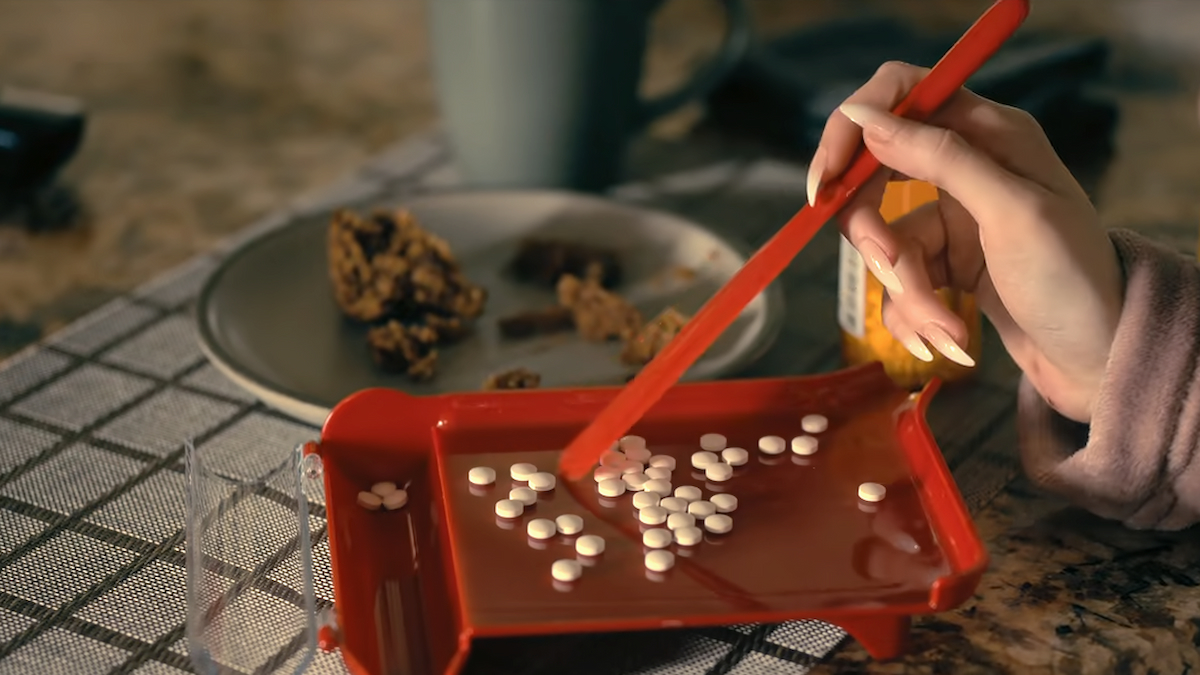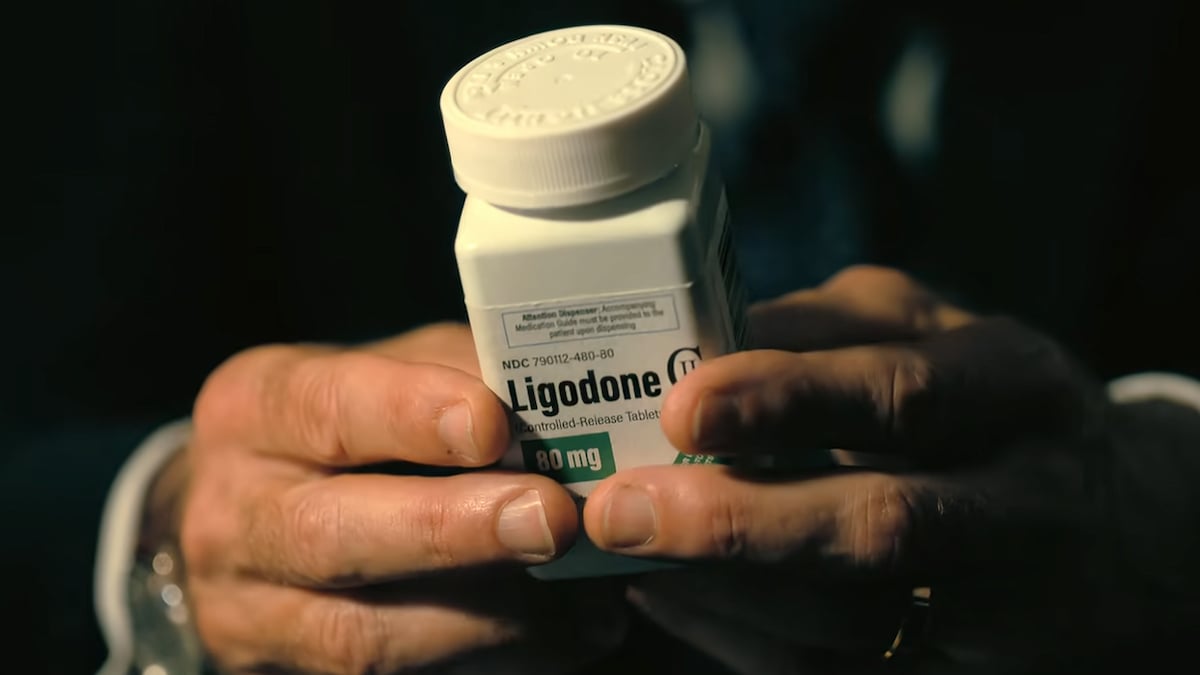Drugs are at the center of the story in the Netflix series The Fall of the House of Usher. The one difference with it and many other similar stories is that Mike Flanagan’s miniseries hones in on the legal drug market and those who become ultra-wealthy in the pharmaceutical industry. Ligodone is the drug responsible not only for the immense financial earnings of the Usher family via Fortunato, but also the pain and long-term demise of countless people.
So, is Ligodone real? Not technically, but it is more complicated than that. Because what Ligodone represents is real and happening still all across the world. Roderick and Madeline Usher may not actually exist, but there are people like them causing the same damage to this day.
Is The Fall of the House of Usher medicine Ligodone actually real?

Brand names for drugs can be hard to remember, so it’s no surprise if you aren’t sure about Ligodone in the The Fall of the House of Usher. It’s natural to wonder if the drug is a real one, with how much it is discussed in the television series. Ligodone is a fictional opioid medication produced by the (also fictional) Fortunato company.
Roderick Usher and his sister Madeline created the drug and had it go to market in 1980. With the similarities and release date, Ligodone can be seen as being represented by one of two (or both) popular opioid medicines. Both Vicodin and Oxycontin have had a colorful past and present with causing addiction and widespread suffering for those who became dependent on the medications. The two are also at the center of the current opioid epidemic that has taken many lives.
What does Ligodone represent in The Fall of the House of Usher?

While Ligodone is not a real medication, there are several just like it in the real world. The story of Ligodone is less about the specific drug itself, but more about the intense suffering and pain brought on by the pharmaceutical industry’s historical negligence around opioids. Drugs like Vicodin, Oxycontin, Opana, and Sublimaze have all contributed to the current opioid epidemic that has plagued both the United States and global population.
It can be debated how much the pharmaceutical industry is responsible for individual addiction and abuse of drugs, as we see it discussed many times in The Fall of the House of Usher. The bigger issue is that many of the medications were initially marketed as non-addictive and pushed aggressively onto patients who suffered from chronic pain. From there, many medicine manufacturing companies, like the fictional Fortunato, made billions of dollars off the dependency of millions.










Published: Oct 13, 2023 01:59 pm